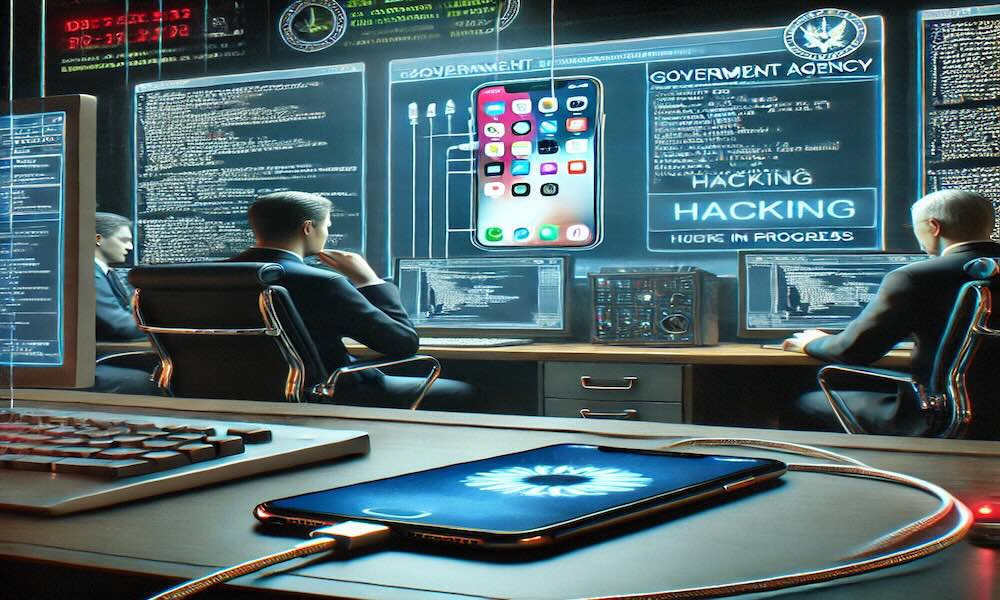FBI Gained Access to Trump Shooter’s Phone in Just Two Days

Toggle Dark Mode
The recent assassination attempt on former President Trump has shed light on the evolution of law enforcement’s ability to gain access to a suspect’s smartphone. While we don’t know whether or not the shooter’s device was an iPhone, we do know the FBI was able to access a modern smartphone in only two days.
This short timeline is in sharp contrast to the previously public beef between the Justice Department and Apple about Apple’s refusal to build what it called a “backdoor” for the iPhone’s encryption. We recently wrote about the law enforcement decryption tool GrayKey, which is capable of providing same-day access to both Android devices and iOS devices running versions through iOS 17. Recently, The Washington Post reported the FBI used technology from the Israeli digital intelligence company, Cellebrite, to hack the shooter’s phone.
The 2016 Standoff Between Apple and the Justice Department

Prior to the 2015 San Bernardino terrorist attack in which 14 people were shot and killed, methods used by the FBI to access an iPhone were kept secret.
However, the San Bernardino incident sparked a months-long legal battle between Apple and the Justice Department as Apple fought a court order to create a special version of iOS for law enforcement. The FBI wanted Apple to modify iOS to allow brute-force software tools to access the device by trying every possible combination of the four-digit passcode that secured it.
Under normal conditions, an iPhone not only enforces delays between passcode attempts but also erases all of the data on it after 10 failures to enter the correct passcode. The FBI was attempting to compel Apple to create a specialized version of the software that would disable these protections, allowing it to try all 10,000 possible passcode combinations more quickly and without any risk to the data on the iPhone.
Apple had already provided law enforcement with iCloud backups of the shooter’s iPhone, but potentially weakening the iPhone’s security for every user was a bridge too far. In an open letter to customers, Apple CEO Tim Cook explained why the company was appealing the decision and likened such a back door to “software cancer.” Many technology luminaries and privacy advocates agreed.
However, the FBI quietly dropped its case against Apple after a third party was able to crack the device, which was an iPhone 5c running iOS 9. A later Freedom of Information Act request revealed Azimuth Security, an Australian security company, was able to access the San Bernardino shooter’s iPhone. At the time, both Attorney General William Barr and FBI Director Christopher Wray publicly blasted Apple for its lack of assistance. Subsequent FBI Director James Comey suggested the hack of the San Bernardino shooter’s iPhone cost over $1 million.
Hacking Technology Today
Federal contract aggregator usaspending.gov indicates that five different federal agencies have spent a total of nearly $15 million with Cellbrite since 2008. It’s safe to say the FBI had a range of options available to it for accessing the Trump shooter’s phone for far less than the $1 million they spent in 2015 — and without reliance on the help of the manufacturer.
In a 2020 study, Upturn, a Washington DC nonprofit, revealed that more than 2,000 law enforcement agencies in all 50 states had access to mobile device forensic tools (MDFTs).
Despite the criticism, pushback, and concern of the privacy community, MDFTs continue to evolve and thrive alongside manufacturer security advancements. Despite the human rights risks of this technology falling into the wrong hands for the right price, it doesn’t appear there’s any stopping law enforcement’s use of MDFTs.
In its study, Upturn claimed these MDFTs are “simply too powerful in the hands of law enforcement and should not be used” given their potential for abuse. At the same time, Upturn acknowledged their proliferation and issued a clear warning we should all acknowledge. The widespread use of MDFTs has largely gone under the radar, meaning there’s little public accounting of when and how they are used or debate about their risks.








